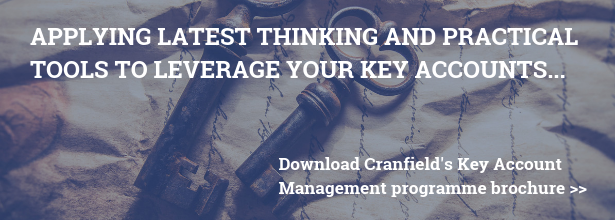
Planning for success can be daunting for organisations that recognise they need to focus on managing a portfolio of fewer (but larger and more powerful) strategic customers. Today, having a strong KAM capability is essential – and yet many organisations get the basics wrong, failing to achieve the results they planned for.
As Groucho Marks famously stated:
“Learn from the mistakes of others. You can never live long enough to make them all yourself.”
Having previously made and observed mistakes during the development of KAM programs, here are 12 elements that I suggest you avoid. These are common practices and prevent many organisations from achieving success.
In no particular order:
- Fail to have a strategy
KAM is a different business model. It requires organisations to think strategically and to develop a pathway that will lead to a new competitive advantage. It is not simply ‘a new way of selling’ and something that can be bolted on to your existing strategy. Organisations that are great at KAM have it at the centre of what they do.
- Don’t have ‘organisation wide’ standards
Key account management goes beyond the key account manager. Organisation-wide aspects need to be considered, such as people, structure, processes, financials, data and culture. A broad and deep set of standards should be developed for your organisation, which defines how you do KAM. These standards form the basis of ‘organisation-wide’ KAM capability.
- Fail to invest and treat the initiative as a change challenge
KAM programs take time to implement. Large, complex organisations need time (often years) to understand and absorb the new ways of working. If the historical business model has been to sell a suite of products, this is different to developing a bespoke solution for each key customer. This change takes investment, time, patience and leadership energy.
- Keep on selling your ‘stuff’ (fail to adopt a value co-creation approach)
KAM is about relationship, trust and working with carefully selected customers to prosper in a challenging and changing world. You cannot take a short-term ‘winner takes all’ approach. Select customers that want to work with you and look to the long-term to jointly prosper.
- Boil the ocean – try to get results in a few months (everywhere)
Looking at great KAM organisations and identifying how they prosper by doing lots of different things can prompt organisations to try to just copy everything that these ‘best practice’ firms do. In practice, they really do not need to do all of this. Stand back, write your strategy and prioritise. There will be three or four things that must be done – and they will take time. So, plan for short-term wins and take your time. Remember, success breeds success.
- Buy a generic KAM training program
No two organisations are the same, so it makes sense that every firm should have its own unique KAM program. Whilst it may seem cost-effective and convenient to just buy a package off the shelf (there are many consulting firms that will provide this) it is usually just a pathway to failure. You need to take best practice and tailor it to your own needs.
- Ignore senior level sponsorship
Ultimately, leadership decide what are the strategic initiatives that an organisation will invest and focus on. Your KAM initiative needs a board level sponsor.
- Ignore the most important KAM aspect (leadership and culture)
Your sponsor is a start! In time, you need to have the rest of the leadership team understanding and supporting a KAM business model. This will be all leaders, including finance, operations, research, and HR. KAM is such a broad capability, it needs support from many areas.
- “I can do this on my own… I am Captain Super-KAM! (Team? What do you mean, team?)”
Carefully selected and developed key account managers can achieve a lot, but the secret to really effective key account initiatives is to have strong supporting KAM teams. Here’s the challenge; these teams do not directly report to the key account manager, and they may only offer a couple of days’ work a month. But they must be focused and clear about their role supporting these strategically important customers.
- Be unaware of organisational tensions
The KAM business model is very different to a traditional ‘sales’ based one. For example, a sales person will get results after every quarter, with a direct measure of performance being obvious and clear. A key account may not see ‘sales’ results for several years (but will achieve other milestone goals along the way). This is a tension and should be recognised and addressed.
- Fail to plan and measure things differently
Of course, you need to plan carefully and have indicators for key milestones as your progress. A balanced scorecard is a great way to capture this, and, if you have followed the previous elements explained in this blog post, should be easier – though it is never that easy!
- Forget about gaining ‘quick wins‘ and having a beach-head
The final element for a successful KAM program is a top tip. It is difficult for any organisation in the early years of implementation to believe that the additional investment and focus will deliver results. To alleviate this problem – build your own case studies by focusing on just a few key accounts. If you have just one KAM strategy that shows a way to grow a strategic customer by 70%, it is very difficult for the leadership in your organisation to reject this approach!
Each of these 12 elements are covered in more detail in the Kogan Page book, Implementing Key Account Management. Take a look and you will have a greater understanding on what it takes to succeed at managing key customers.
Our work in this area is critical to achieving successful key account management programs for organisations looking to succeed at managing key account customers. For the past twenty years, Cranfield has pioneered the development of Key Account Management research in Europe. Working with world leading businesses to adopt new frameworks to fully leverage key relationships and strategies. This new frontier knowledge is continually integrated into our Key Account Management Programme
Blog produced by: Mark Davies, visiting fellow on Cranfield School of Management Key Account Management Programme and KAM Best Practice Research Club.
Read more:
- How to succeed at Strategic Account Based Marketing
- A ten-step framework for setting effective sales targets
- Motivating and rewarding the sales force
- Managing and measuring sales performance
- Advance your career: How to go from middle weight to heavy weight in 2019




